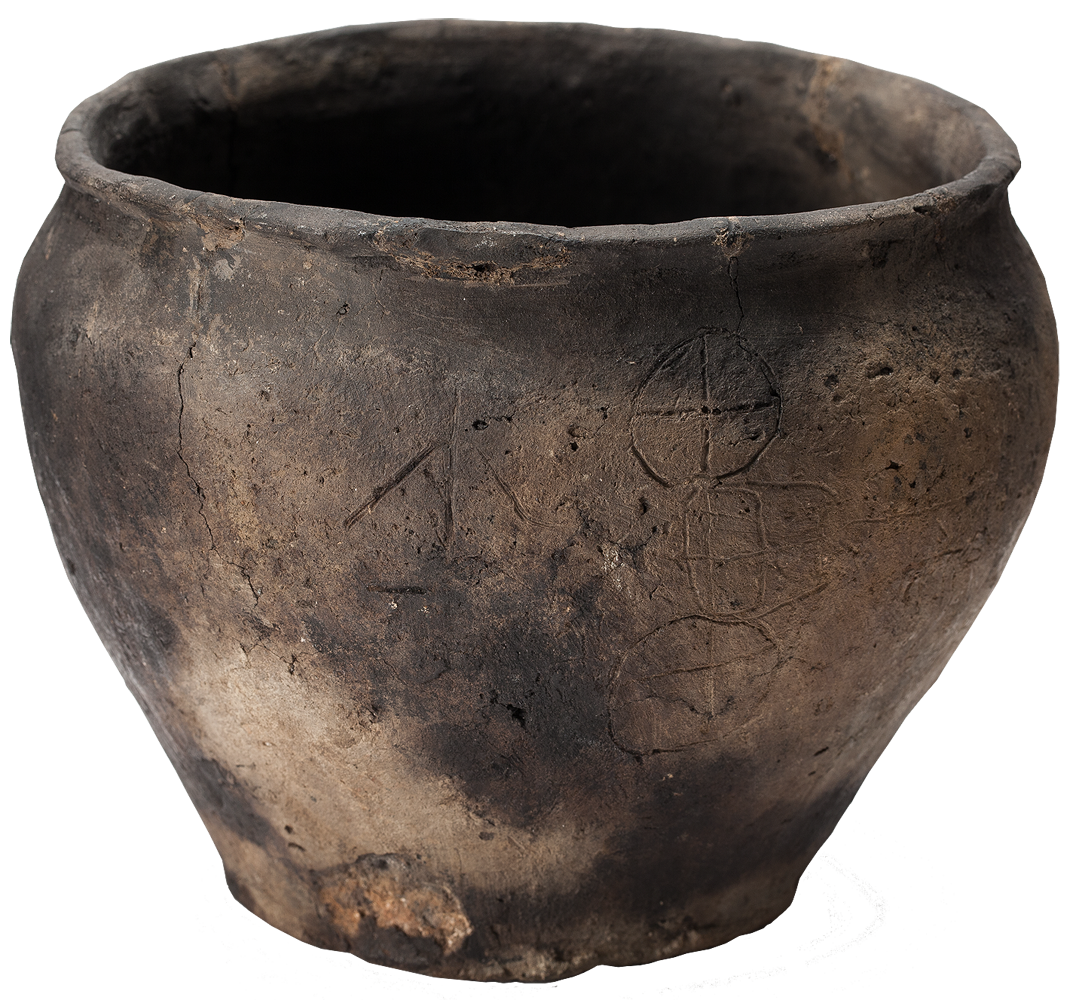Vessel with the image of a cart

A jar-shaped vessel with a small edge bent outwards. On its outer surface a two-wheel chariot towed by horses is depicted. The horses are presented very schematically. The chariot wheels and the trapezoid-shaped driving platform are seen in the "view from the top" projection. The drawbar runs through the riding area and goes well beyond it. At the end of the shaft is a crossbar in both directions. In the middle of the drawbar to the right and to the left are made lines indicating harness traces towards the horses. Three lines to the left of the chariot are, most likely, indicate a tent or Yurt.
More information...The drawing was made on the raw clay before firing with a sharp object. Outer surface was partly peeled off long ago in ancient times. The vessel was found in a burial of the XVIII–XVII Centuries BC.
Functional purpose: a vessel for storing or cooking food, was a part of funeral inventory.
Note of uniqueness: such vessels are very rare finds, unique due to the image of a two-wheeled chariot with technically elaborated details. Thanks to these images we can assume what kind of transport was used by the population of the Steppes in the second quarter of the II Millennium BC.
